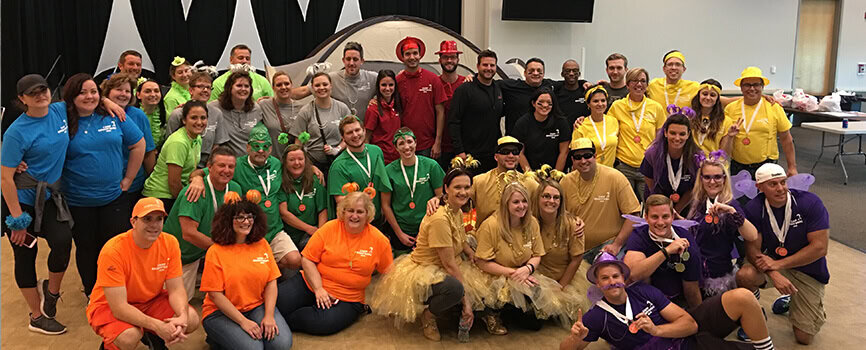[vc_row][vc_column width=”1/4″][/vc_column][vc_column width=”1/2″][vc_column_text]
Managers are often struggling to find the right talent for their companies. In a competitive job market, follow these tips to become a more marketable and sought-after candidate!
Bring out your inner Steve Jobs
As an engineer, you should already have a set of advanced technology skills. But what makes you stand out from the rest? The reality, is that the world has gone digital, and strengthening your tech skills will only make you that much more valuable. There are always many courses, tutorials, and training programs available– many of them are free! Trust us, boosting your inner tech savvy, will make you more marketable and desirable to recruiters.
Dress for the job you want
It’s all about the way you present yourself. Whether it’s at a job interview, casual networking event, or simply a regular day at work, make sure you’re always putting your best foot forward. Make sure you’re clean, well-groomed and well-dressed at any occasion. Not only does it show respect to the company and the people around you, but it shows that you’re serious about your job.
Try to avoid gaps
Especially when it comes to engineers, the best candidates are usually the ones that are currently employed. This shows that you’re already marketable! Yet, if for some reason you are unemployed, don’t worry! Take it upon yourself to get involved in organizations related to your field and become an active job-seeker.
Passive is good
Although you may be content with your current position, companies are willing to invest a lot of time and money to make you a better offer. With such a valuable and unique skill set, keep an open mind to the many other opportunities around you.
Are you in the right location?
In general, employers prefer local candidates. It takes a lot from a company to orchestrate in-person interviews when you live far away. For example, if you’re interested in working for the automotive industry, living in the Detroit area may grant you more offers than any other state. If you want to become more marketable for a specific company, try moving to their location for a couple of weeks. Line up interviews during that time, and make the best of the time you have there.
Loyalty
Whether you’ve been with one company for 5 years, or 5 companies in 5 years, find a way to present your loyalty. Some companies might find you more marketable if they see you’ve been loyal to your past companies. Others, may prefer a go-getter who has achieved their goals hopping from one position to another. As always, it’s not about what you say, but how you say it.
[/vc_column_text][/vc_column][vc_column width=”1/4″][/vc_column][/vc_row]




 It’s an exciting time to be a .NET Developer. As Microsoft continues to innovate across desktop, mobile and web, findings indicate that many opportunities lay ahead for the .NET developers ecosystem.
It’s an exciting time to be a .NET Developer. As Microsoft continues to innovate across desktop, mobile and web, findings indicate that many opportunities lay ahead for the .NET developers ecosystem. Brightwing is Currently Paying $1,250 for .NET/Java Referrals – To learn more,
Brightwing is Currently Paying $1,250 for .NET/Java Referrals – To learn more,  Since almost every job search happens online, there’s really no difference between candidate experience and UX anymore. We must accept that today’s job search and recruiting process happens exclusively online, for every position, for every candidate, for every sector (save the oddest of outliers).
Since almost every job search happens online, there’s really no difference between candidate experience and UX anymore. We must accept that today’s job search and recruiting process happens exclusively online, for every position, for every candidate, for every sector (save the oddest of outliers).  Recruiting in today’s ultra-competitive job market is tough and success can often hinge on the team that you already have in place. Some sources suggest that in the start-up world the team is second only to timing when it comes to recruiting. The team is more important than the idea, the business model, and funding.
Recruiting in today’s ultra-competitive job market is tough and success can often hinge on the team that you already have in place. Some sources suggest that in the start-up world the team is second only to timing when it comes to recruiting. The team is more important than the idea, the business model, and funding.  With over 100 occupations in the U.S. currently posting more jobs than actual hires month over month, according to CareerBuilder, the war for talent is on. So you would think employers would be scrambling to figure out the best ways to lure talent, especially considering that millennials who will make up 75% of the workforce in the next decade are itching for their next career opportunity.
With over 100 occupations in the U.S. currently posting more jobs than actual hires month over month, according to CareerBuilder, the war for talent is on. So you would think employers would be scrambling to figure out the best ways to lure talent, especially considering that millennials who will make up 75% of the workforce in the next decade are itching for their next career opportunity.  Almost every cover letter says the same thing – it says ‘Here’s my resume, and here’s why I’m qualified for your job opening.’ No one has time to read cover letters, because the contents of the cover letter are so unlikely to make the manager’s heart beat faster that he or she doesn’t invest the twenty seconds it would take to scan the cover letter.
Almost every cover letter says the same thing – it says ‘Here’s my resume, and here’s why I’m qualified for your job opening.’ No one has time to read cover letters, because the contents of the cover letter are so unlikely to make the manager’s heart beat faster that he or she doesn’t invest the twenty seconds it would take to scan the cover letter.  Most organizations say they are more open-minded than ever about virtual teams, and yet they still have old-school systems in place for hiring people across the country or around the world. From where I sit, the overlapping barriers come down to structure, culture, and mindset.
Most organizations say they are more open-minded than ever about virtual teams, and yet they still have old-school systems in place for hiring people across the country or around the world. From where I sit, the overlapping barriers come down to structure, culture, and mindset.  IT has become ingrained in every part of business strategy, so it’s not surprising that demand for tech talent is at an all-time high, forcing organizations to be creative when competing for talent. We’re already through the month of January and employers are looking down the barrel of a competitive 2016. Several industry experts offer their advice.
IT has become ingrained in every part of business strategy, so it’s not surprising that demand for tech talent is at an all-time high, forcing organizations to be creative when competing for talent. We’re already through the month of January and employers are looking down the barrel of a competitive 2016. Several industry experts offer their advice.  Demand is outpacing the supply of talent as baby boomers hit retirement age and the economy improves, putting pressure on companies to try new angles. Here are five less-obvious pools of talent that can bring fresh ideas to the company, as well as fill gaps.
Demand is outpacing the supply of talent as baby boomers hit retirement age and the economy improves, putting pressure on companies to try new angles. Here are five less-obvious pools of talent that can bring fresh ideas to the company, as well as fill gaps. 
 The federal government will be allocating $4 billion over the next 10 years to help speed up the development and adoption of fully autonomous cars, according to a press release. US Department of Transportation Secretary Anthony Foxx also announced that the federal government will remove any potential roadblocks currently preventing the technology from taking off.
The federal government will be allocating $4 billion over the next 10 years to help speed up the development and adoption of fully autonomous cars, according to a press release. US Department of Transportation Secretary Anthony Foxx also announced that the federal government will remove any potential roadblocks currently preventing the technology from taking off.  Connected-car service provider
Connected-car service provider 
 The British Government has just committed almost $30 million to develop various facets of autonomous car tech, a chunk of which Bosch and Jaguar Land Rover are getting to develop self-driving cars that actually “drive like humans, not robots.”
The British Government has just committed almost $30 million to develop various facets of autonomous car tech, a chunk of which Bosch and Jaguar Land Rover are getting to develop self-driving cars that actually “drive like humans, not robots.”  It seems like the entire automotive world is focusing on autonomous cars. Not all automakers are looking to embrace autonomous cars; Porsche’s CEO has said that the company doesn’t plan to embrace the autonomous future.
It seems like the entire automotive world is focusing on autonomous cars. Not all automakers are looking to embrace autonomous cars; Porsche’s CEO has said that the company doesn’t plan to embrace the autonomous future. 




